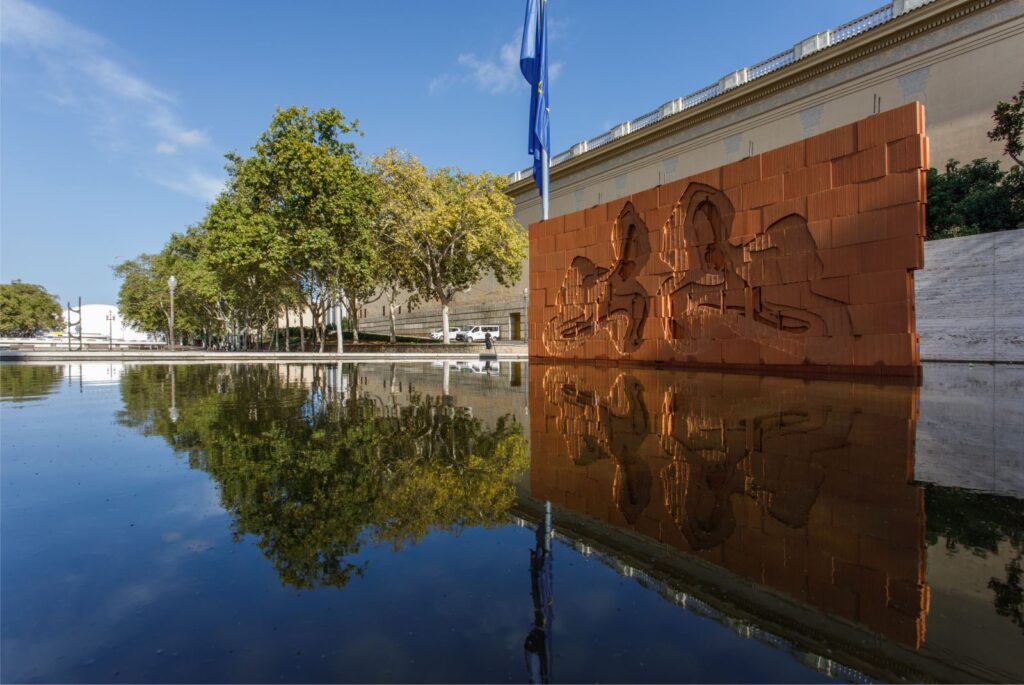Psicoarquitectura by Oscar Abraham Pabón

The Fundació Mies van der Rohe in collaboration with LAB 36 and Galería Senda present Psicoarquitectura, the new temporary artistic intervention at the Mies van der Rohe Pavilion, from September 14 to October 8, 2023. The artist and architect Oscar Abraham Pabón addresses the materiality of the Pavilion from its interpretative and psychological dimension.
The Psicoarquitectura project is developed in two acts; the first as an introduction and referential framework, and the second results in the artistic intervention that is incorporated into the framework of the Pavilion that inspired the initial reflection.
Introduction and frame of reference The artist takes as a point of reference the symmetrical shapes that the surfaces of the Pavilion create and makes a parallel with the shapes of the Stains
that the psychiatrist Hermann Rorschach (1884-1922) created by folding a sheet with an ink blot as a projective method to evaluate and diagnose the person looking at them based on what they see.
The responses that are generated in the attempt to give figurative meaning to the ambiguity of the forms reveal the aspects of mental life implicit in the act of knowing. In the same way, Oscar Abraham Pabón proposes a turn that takes us from interpreting the object to be the interpreted subject.
Artistic intervention
As a second act Oscar Abraham Pabón presents the materialization of a wall over the large pond of the Pavilion made of blocks of terra cotta (Calibric ONE). Breaking the surface of the wall the drawing of a new ink stain made from its interpretative possibilities interrelates with
the Pavilion and with its own reflection that duplicates it in the water.
The clay block is offered as an object of interpretation, where the wall is approached as a surface or skin that showing itself in the different levels of the layers that make it up makes tangible and brings to the surface an internal dimension; which involves both the constructive history of the material and its role in twentieth-century architecture and urbanism.
Ludwig Mies van der Rohe himself used brick as a structural material and for its aesthetic characteristics in some of his works simultaneous to the Barcelona Pavilion such as the Haus Lange and the Haus Esters in Krefeld. As Werner Blaser noted in Mies van der Rohe: The Art of Structure, “the structure of a brick wall begins already with the smallest
divisible unit: the brick”.
This basic unit is now transferred to the Pavilion emphasizing the relationship between structure, materiality and beauty, in this case with an exempt and worked wall (“free standing wall”). Source and photos Courtesy of Fundació Mies van der Rohe.





